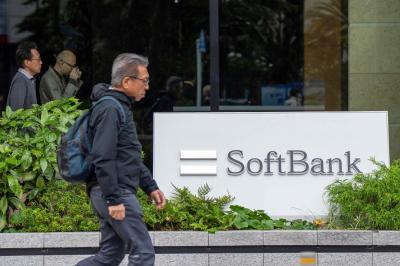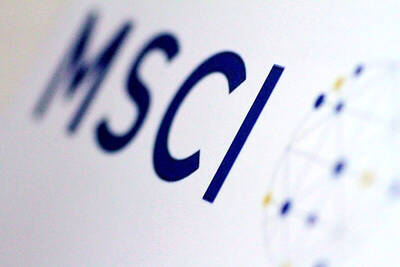Uber Technologies Inc and Google Inc have long been bitter rivals in the race to build the autonomous vehicles that appear integral to the future of transportation. Soon, Uber will have a bit of help in that effort from a man who played a key role at Google.
Amit Singhal, a 15-year Google veteran and a former senior vice president for search at the company, on Friday said that he planned to join Uber as senior vice president for engineering. At Uber, he will work to build out the software and infrastructure that are the foundation of the company’s ride-hailing services.
Singhal will report to Uber chief executive Travis Kalanick and lead the company’s mapping division and a unit that runs the dispatching, marketing and pricing of Uber cars. He will also advise Anthony Levandowski, who runs the company’s self-driving automobile efforts.
“It’s hard enough to connect millions of drivers to millions of riders in real time while creating optimal routes for drivers,” Singhal wrote in a post on his personal blog on Friday. “Add to that the twist of predicting real-time traffic, pooling multiple riders and making the system economically attractive for everyone — and now you have one of the most challenging computer science problems I’ve encountered in my 30-year career.”
The hiring of Singhal, who left Google last year, is a coup for Uber, which has stated its intention to fight Google’s substantial head start in autonomous-vehicle research. Uber has poached multiple high-level employees from Google over the past seven years, including Levandowski.
Early in Uber’s history, it and Google were more allies than enemies. Google highlighted the Uber app in its maps application as a mode of transportation, and GV, the venture capital arm of Google’s parent, Alphabet Inc, has invested hundreds of millions of US dollars in Uber.
However, since it became clearer that Uber and Google would compete in the development of self-driving vehicles and in other areas, the companies have grown apart. Google offers a type of carpooling service in the San Francisco area through Waze, a mapping app it owns. And David Drummond, a top Google executive, left his position on the Uber board of directors last year.
Singhal’s move to Uber ratchets up the rivalry. Hired by Google in 2000, he was the company’s 176th employee and he rewrote many of the original search algorithms created by the company’s founders, Larry Page and Sergey Brin.
Singhal is credited as one of the engineers who built the smarter and faster search engine that gave Google what proved to be an insurmountable advantage in Web search. When Singhal left his position as Google’s head of search in February last year, he said he planned to focus on philanthropy.
“I love Amit’s excitement for solving complex computer science problems and his passion for helping improve people’s lives through technology,” Kalanick said in a statement. “The team at Uber, myself included, will learn a lot from him.”

PERSISTENT RUMORS: Nvidia’s CEO said the firm is not in talks to sell AI chips to China, but he would welcome a change in US policy barring the activity Nvidia Corp CEO Jensen Huang (黃仁勳) said his company is not in discussions to sell its Blackwell artificial intelligence (AI) chips to Chinese firms, waving off speculation it is trying to engineer a return to the world’s largest semiconductor market. Huang, who arrived in Taiwan yesterday ahead of meetings with longtime partner Taiwan Semiconductor Manufacturing Co (TSMC, 台積電), took the opportunity to clarify recent comments about the US-China AI race. The Nvidia head caused a stir in an interview this week with the Financial Times, in which he was quoted as saying “China will win” the AI race. Huang yesterday said

Japanese technology giant Softbank Group Corp said Tuesday it has sold its stake in Nvidia Corp, raising US$5.8 billion to pour into other investments. It also reported its profit nearly tripled in the first half of this fiscal year from a year earlier. Tokyo-based Softbank said it sold the stake in Silicon Vally-based Nvidia last month, a move that reflects its shift in focus to OpenAI, owner of the artificial intelligence (AI) chatbot ChatGPT. Softbank reported its profit in the April-to-September period soared to about 2.5 trillion yen (about US$13 billion). Its sales for the six month period rose 7.7 percent year-on-year

MORE WEIGHT: The national weighting was raised in one index while holding steady in two others, while several companies rose or fell in prominence MSCI Inc, a global index provider, has raised Taiwan’s weighting in one of its major indices and left the country’s weighting unchanged in two other indices after a regular index review. In a statement released on Thursday, MSCI said it has upgraded Taiwan’s weighting in the MSCI All-Country World Index by 0.02 percentage points to 2.25 percent, while maintaining the weighting in the MSCI Emerging Markets Index, the most closely watched by foreign institutional investors, at 20.46 percent. Additionally, the index provider has left Taiwan’s weighting in the MSCI All-Country Asia ex-Japan Index unchanged at 23.15 percent. The latest index adjustments are to

CRESTING WAVE: Companies are still buying in, but the shivers in the market could be the first signs that the AI wave has peaked and the collapse is upon the world Taiwan Semiconductor Manufacturing Co (TSMC, 台積電) yesterday reported a new monthly record of NT$367.47 billion (US$11.85 billion) in consolidated sales for last month thanks to global demand for artificial intelligence (AI) applications. Last month’s figure represented 16.9 percent annual growth, the slowest pace since February last year. On a monthly basis, sales rose 11 percent. Cumulative sales in the first 10 months of the year grew 33.8 percent year-on-year to NT$3.13 trillion, a record for the same period in the company’s history. However, the slowing growth in monthly sales last month highlights uncertainty over the sustainability of the AI boom even as